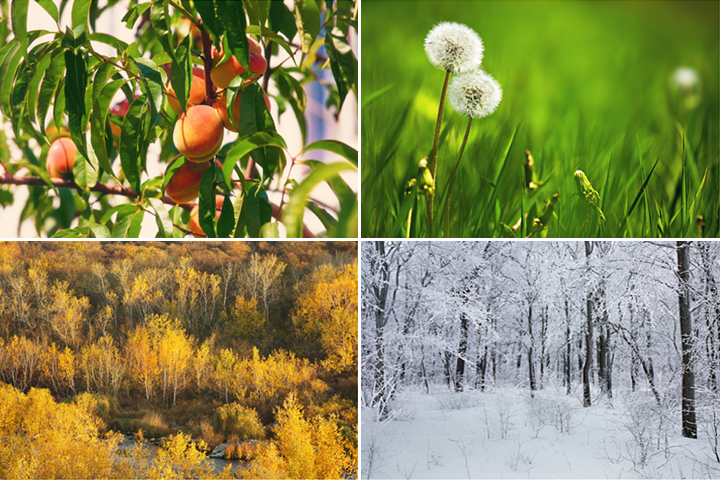
Investigate the four seasons through a whole-class inquiry.
To start off an interdisciplinary study about the four seasons, Ms. C. asked her Grade 1 learners to draw everything they knew about the seasons. She transcribed everything they told her about their pictures. This gave her a lot of preliminary information regarding common themes and potential ways their class inquiry could go. She next used a Gallery Walk/Graffiti Wall–type strategy to capture some of their specific questions related to each of the four seasons and seasons in general, giving her many rich questions that the learners were interested in exploring.
Using a TWLH strategy* with guidance, the learners described how they might find out about or investigate their questions, using resources including books, asking their families, “looking on a phone,” viewing videos, going on a field trip, and asking a scientist. They discussed what sources might be most reliable and useful. Over the coming weeks, Ms. C. helped the learners explore their inquiry questions using a variety of these sources as the learners practised analyzing and synthesizing their newfound knowledge to be well informed.
Ms. C. also recognized that some of the learners’ questions offered an opportunity to include Indigenous ways of knowing in their learning. She used a Cherokee teaching from the book, Keepers of Life: Discovering Plants through Native American Stories and Earth Activities for Children by Michael J. Caduto and Joseph Bruchac to help explore the learner-generated question, “Why are some trees always green?” She also invited a community Elder to share stories and teachings about the land and changing seasons.
The learners used many sources and documented their learning in a variety of forms, including sketching and taking notes in their science log, taking pictures, or recording short videos on the classroom tablets as they decided what mode served best to share their thinking. As they documented their learning, they thoughtfully considered whether the information they were gathering answered the questions they had posed.
To wrap up learning for the day, the learners would often take part in a Knowledge Building Circle** serving to honour the work that had been done through their exploration and learning. Through this practice, learners practised active listening and reflecting as they heard about their classmates’ findings and then shared their own thinking, building off each other’s ideas. As the learners came together as a classroom community to share their learning, they made even more connections and deepened the relationship to the broader whole-class inquiry.
* TWLH Strategy is a strategy where learners list the following: What we think we know, what we want to know, what we learned, how we know.
**Knowledge Building Circle refers to the seating configuration of learners as they engage in learning.
Caduto, Michael J., and Joseph Bruchac. Keepers of Life: Discovering Plants through Native American Stories and Earth Activities for Children. Fulcrum Publishing, 1997.